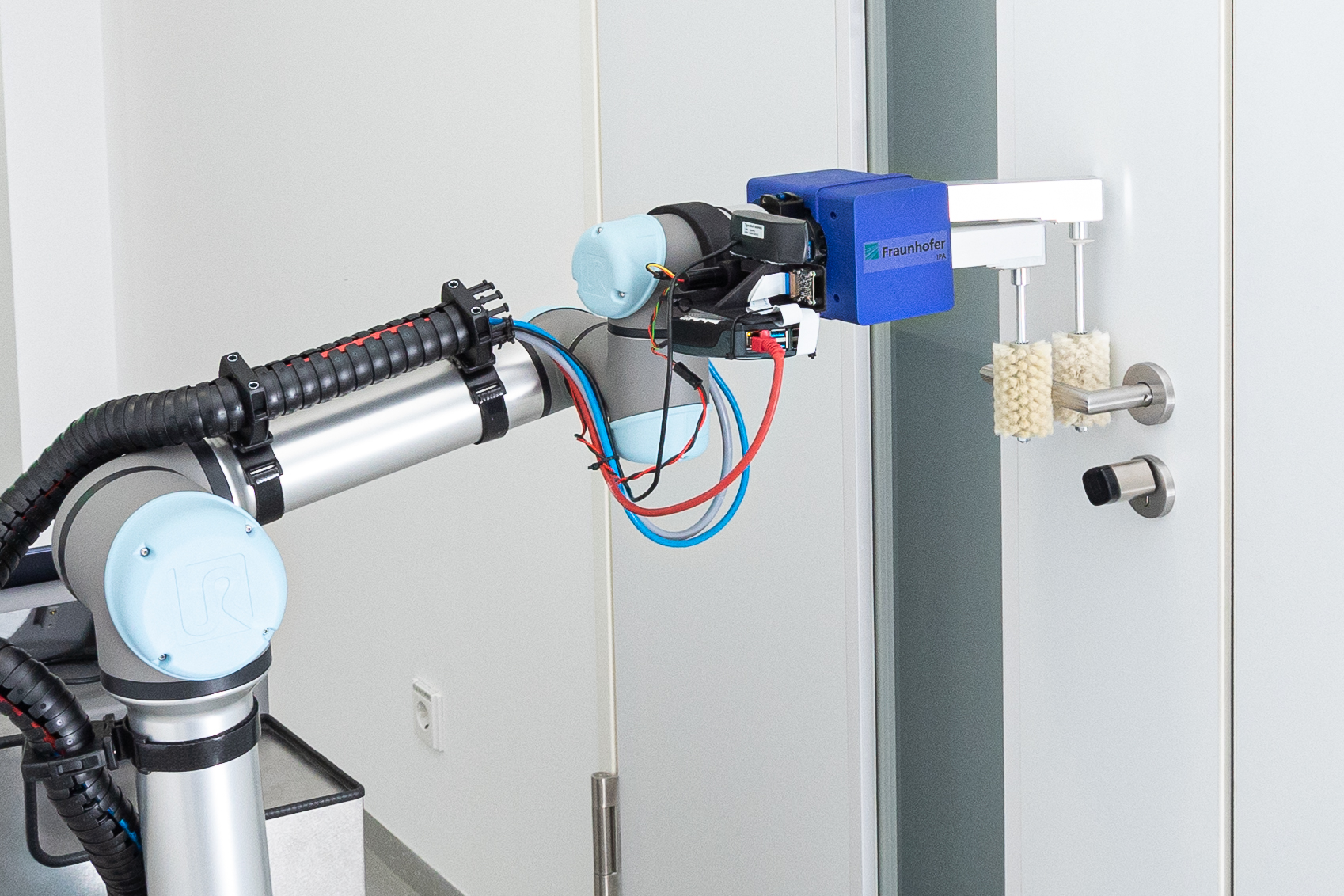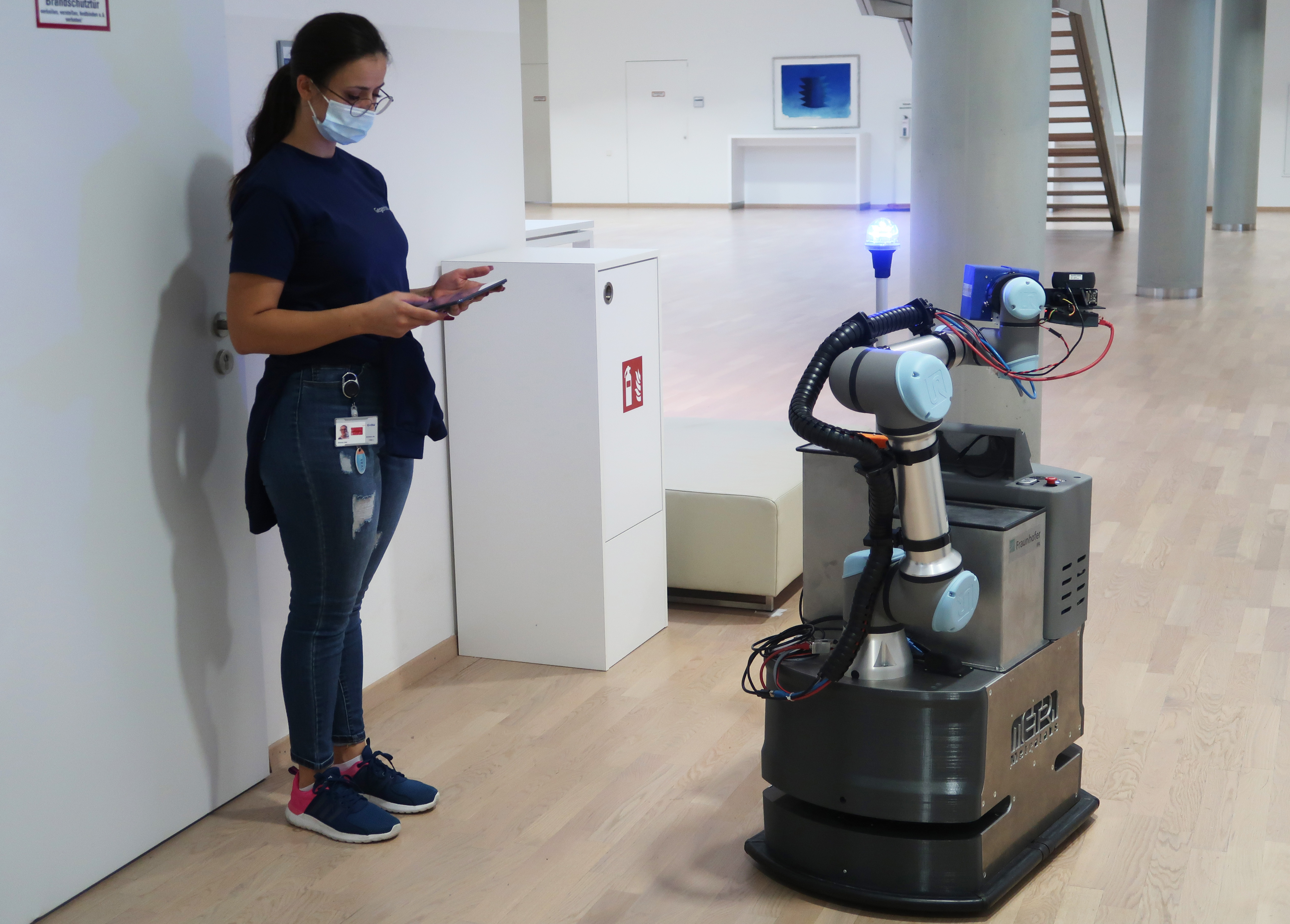
DeKonBot 2: Versatile disinfection robot provides relief for cleaning staff

In short
In the Fraunhofer project “MobDi - Mobile Disinfection”, Fraunhofer IPA and its partners have developed the “DeKonBot 2” cleaning robot. The robot is designed to minimize the risk of contact infections and to take the strain off cleaning staff when it comes to implementing hygiene regulations.
In detail
The first generation of “DeKonBot” was presented in 2020. The aim of further developing the service robot was to make the existing prototype more compact, more economical and more efficient. A particular challenge in this regard: to make the “DeKonBot 2” cleaning tool more versatile and space-saving as well as to enable the robot to disinfect a wide variety of objects effectively. Fraunhofer IPA’s role in the project was to integrate the newly developed technologies and functionalities as well as to make the necessary modifications to the robot hardware.
The IPA experts have also refined the existing software components for object recognition and manipulation. One of the robot’s key technologies is its ability to recognize the objects to be disinfected, as the algorithms must also function reliably in different environmental conditions. Thanks to machine learning methods and a new sensor system, the robot is also capable of recognizing objects that are particularly difficult to detect, such as reflective metal door handles. Through the use of cleaning brushes, “DeKonBot 2” can also be deployed in rooms with people. This is a clear advantage over UV-based disinfection robots and robots for spray disinfection.
When putting the application into practice, one of the most important goals was to make the robot easy and intuitive to operate. After a one-off teach-in session, “DeKonBot 2” navigates autonomously through the building to clean surfaces such as light switches and door handles. As it moves around, the robot dips its cleaning brushes into a tank of disinfectant to disinfect them and prevent the spread of germs. In a one-week practical test, test persons were able to operate “DeKonBot 2” successfully after being shown how to use it and said they could imagine collaborating with the robot on a permanent basis.
Together with the company MetraLabs, Fraunhofer IPA aims to bring the robot to product maturity so that it can be launched onto the market in 2023. Pre-orders can already be placed.
In the mid-term, the robot should also be capable of recognizing further relevant objects such as handles or tables and also of opening doors with the aid of low-cost actuator technology. The robot could then be deployed to clean and disinfect surfaces in rooms.
Insights into the project
“Automatic disinfection with the brush tool attached to the robot arm opens up many more application possibilities than with other cleaning robots. [...] In Germany alone, there are more than 15,000 nursing homes and nearly 2,000 hospitals where DeKonBots could be used to disinfect door handles, light switches, handrails and other relevant surfaces on a regular and documented daily basis.”
Dr. Andreas Bley, Managing Director of MetraLabs GmbH in the Fraunhofer IPA customer magazine "interaktiv” (translated from German)

Privacy warning
With the click on the play button an external video from www.youtube.com is loaded and started. Your data is possible transferred and stored to third party. Do not start the video if you disagree. Find more about the youtube privacy statement under the following link: https://policies.google.com/privacyField test of the cleaning and disinfection robot “DeKonBot 2” in an office building.

